Nonprofit Technology & Fundraising Blog
Subscribe to our mailing list

April 23, 2025 | Donor Engagement, Donor Retention, Fundraising Operations, Online Fundraising
Corporate giving is no longer just a line item in the budget —it’s a meaningful driver of change in philanthropy. For nonprofits, company donations to charity represent more than financial support; they open doors to valuable partnerships, community engagement, and long-term impact.
As corporate social responsibility (CSR) becomes a core business strategy, nonprofit leaders must learn how to tap into this powerful revenue stream. Whether through matching gifts, sponsorships, or volunteer grants, corporate philanthropy offers abundant opportunities to strengthen your mission and grow sustainably.
In this blog, we’ll cover everything you need to know, from types of corporate giving to practical steps for building partnerships and staying ahead of fundraising trends.
Corporate giving refers to businesses’ financial or in-kind support to nonprofit organizations. It can include one-time gifts, sponsorships, employee-driven campaigns, and structured corporate donation programs aligned with a company’s CSR goals.
On average, corporate gifts have accounted for more than $20 billion in nonprofit contributions annually. This is a reflection of employer and employee values, with a majority (70%) of prospective employees expressing that it is important to them that their future employer engages in philanthropic impact activities.
Let’s explore why corporate entities give back to charity.
Companies give for a variety of reasons—both altruistic and strategic. Beyond simply doing good, corporate philanthropy is a way for businesses to connect with their communities, support employee values, and contribute to the causes their customers care about.
Giving also strengthens internal culture, builds external brand trust, and helps companies meet their CSR and ESG (Environmental, Social, Governance) commitments. The result is a win-win: nonprofits gain critical resources and visibility, while companies deepen their social impact and public connection.
This intentional support is more than a goodwill gesture—it’s a strategic partnership waiting to be built with various causes.
Corporate giving programs come in many forms. Understanding these different types can help your nonprofit create compelling pitches that align with companies’ philanthropic interests.
Straightforward financial contributions from companies to nonprofits. These can be unrestricted donations or funds designated for specific campaigns or projects.
Corporations match donations made by their employees, typically dollar-for-dollar. This is a powerful way to double your fundraising impact.
Make the most of matching gifts. DonorPerfect’s integration with Double the Donation helps you identify match-eligible donors and automate outreach—so you never leave money on the table.
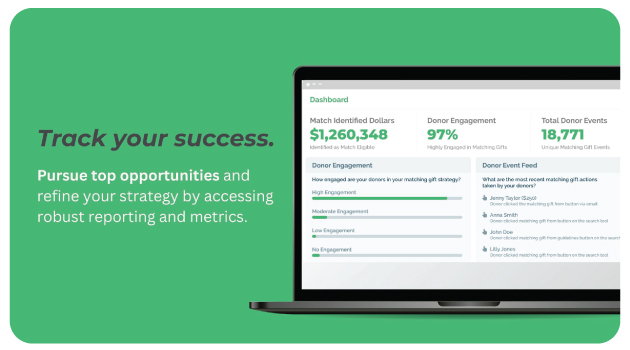
Donations are tied to employee volunteer hours. For example, a company might donate $500 to a nonprofit for every 20 hours an employee volunteers.
Support tied to events or initiatives, offering branding and recognition for the company in return.
Pro tip: Create tiered sponsorship packages that align with your events or campaigns. Offer a clear menu of benefits (like logo placement, speaking opportunities, or social media promotion) to help companies see the value of their support. Bonus: Customize packages based on the company’s goals to increase buy-in.
Donated products, services, or professional expertise, such as marketing, legal support, or software.
Workplace-based campaigns that encourage staff to support causes via payroll deductions or fundraising drives such as a peer-to-peer team fundraising initiative.
Many large companies operate foundations with formal grant programs. These are often competitive and mission-driven.
Want to engage a company’s team on a deeper level? Peer-to-peer fundraising is a dynamic way to turn employee interest into lasting impact.
Corporate supporters often want their employees involved—and peer-to-peer campaigns are a perfect fit. Use peer-to-peer tools to:
Pro tip: This is especially effective for awareness months, giving days, or employee anniversary campaigns. It’s a powerful way to deepen the connection between your cause and their culture. Peer-to-peer campaigns are also great for corporate teams that participate in races to raise awareness for their favorite cause.
Corporate giving often involves more than one contact—like an employee making a gift and the company matching it later. DonorPerfect’s soft credit feature helps you attribute giving to both parties, so you can track relationships, recognize the right people, and report.
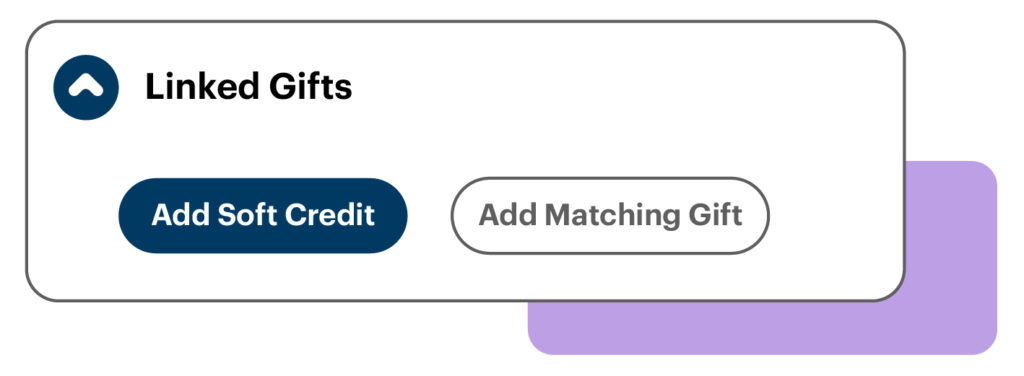
Corporate gifts and sponsorships often begin with a conversation—and typically culminate in a formal agreement signed by both parties. But that doesn’t mean forms don’t play a role. Custom forms can streamline your internal processes, collect important partner details, and reinforce a professional experience for the company.
Think of your partnership registration or sponsorship interest forms as a key administrative and stewardship tool—especially when companies give in-kind, contribute online, or want to initiate a partnership conversation.
Here’s how you can customize forms to enhance your corporate fundraising workflows:
This structure is beneficial for:
With DonorPerfect Online Forms, you can easily duplicate and tailor forms for different corporate campaigns or sponsor types—no coding required. This ensures all partner details are tracked in your nonprofit customer relationship management (CRM) system, streamlining communication, reporting, and follow-up.
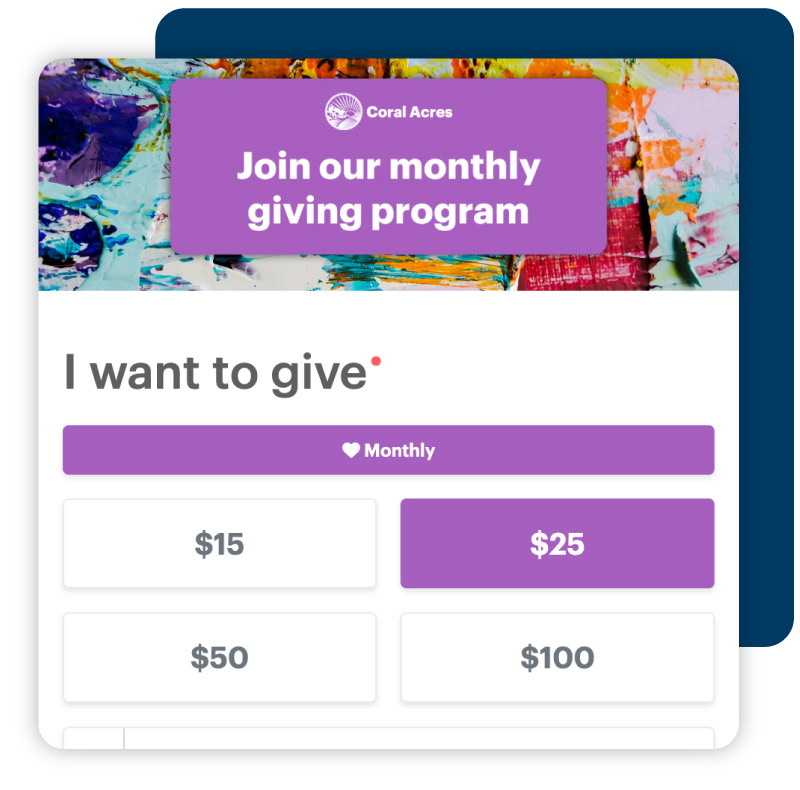
Pro tip: If your form is part of a sponsorship onboarding process, pair it with an automated thank-you email and a PDF of your sponsorship agreement or benefits summary for a seamless experience.
The benefits of corporate giving go far beyond financial support. When a company invests in your cause, it can create a ripple effect across your organization and community. From increased credibility to new donor networks, corporate partners can accelerate your mission in addition to individual donations and other giving methods.
Corporate giving isn’t just another revenue stream—it brings deep and lasting value to your mission:
These benefits compound over time, turning company donations into enduring partnerships.
Corporate relationships also help build bridges between your nonprofit and the broader business community—sparking new ideas, collaborations, and long-term champions.
Attracting corporate support takes intention and strategy. Here’s how to start:
Look for businesses that align with your mission or serve similar communities. Tap into local resources like chambers of commerce, economic development councils, or professional associations. Explore partnerships with businesses in your community—or those outside of your area that share your cause or values. Companies often support causes they’re personally connected to, and many are willing to travel to attend your events or even form a peer-to-peer fundraising team on your behalf.
Go beyond sending generic letters to existing and prospective partners. Tailor your pitch to match the company’s giving priorities, CSR reports, or foundation guidelines.
Tailor your outreach with a clear process:
Sample message:
“Hi [Name], I’m [Your Name] with [Your Nonprofit], and we support [brief mission/cause]. I noticed [Company] has been actively supporting [related cause or initiative], and I’d love to connect to explore potential alignment. Would you be open to a quick 20-minute call next week?”
Keep it focused, friendly, and easy to respond to.
Companies want to see how their support drives change. Use data, visuals, and storytelling to show your impact clearly.
Highlight metrics like direct financial outcomes, audience reach, community participation, and brand exposure:
The more clearly you show how their support connects to real outcomes, the easier it is for companies to say yes or continue multi-year support.
Understanding which metrics matter to companies can help you maintain transparency and deepen trust. Here are a few KPIs to share with corporate partners:
Use DonorPerfect’s dashboard analytics to track, visualize, and share these insights in custom reports.
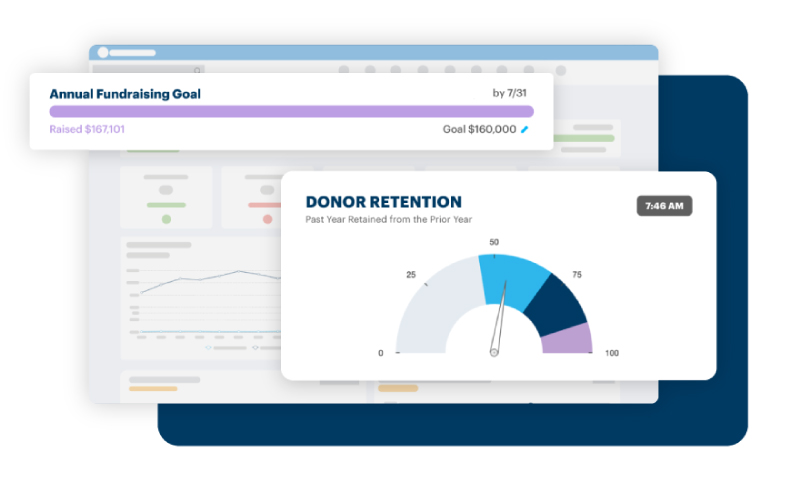
Use your board, donors, and volunteers to make warm introductions to corporate contacts.
The real value comes after the first gift. Here’s how to cultivate long-term partnerships:
Building lasting partnerships doesn’t happen by accident—it takes strategy. That’s where a moves management approach comes in.
Just like major donors, corporate supporters benefit from a moves management strategy that guides them from first contact to a long-term partnership. By using a nonprofit CRM’s moves management features, you can:
Use this structured approach to grow a one-time sponsor into a multi-year funder, volunteer hub, or event underwriter.
Provide updates on the impact of their gift. Don’t wait for the annual report—keep them engaged year-round.
Pro tip: If you’re unsure how often to reach out or what type of updates they want, ask early. A quick “What’s the best way for us to keep you informed?” can build trust and set a tone of collaboration.
Stay connected without the hassle. Automate thank-you’s, updates, and check-ins with DonorPerfect’s Automated fundraising tools. Keep your corporate partners engaged all year long—with less manual work.
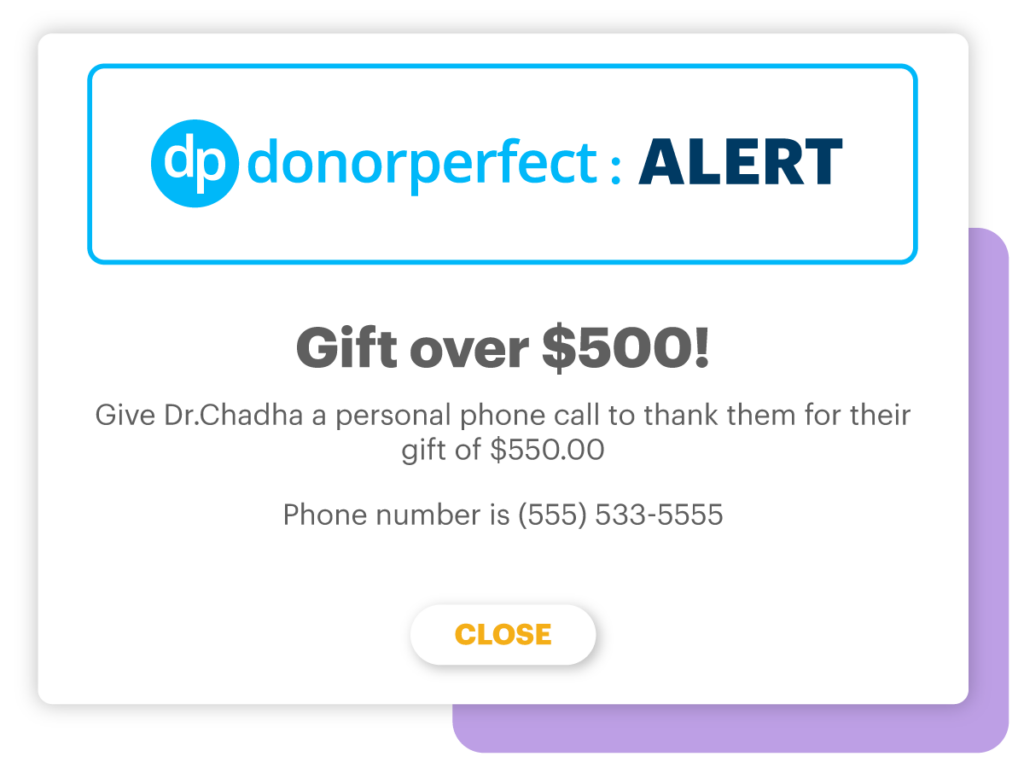
Not sure how often to connect with corporate sponsors? Here’s a sample year-long stewardship plan you can customize.
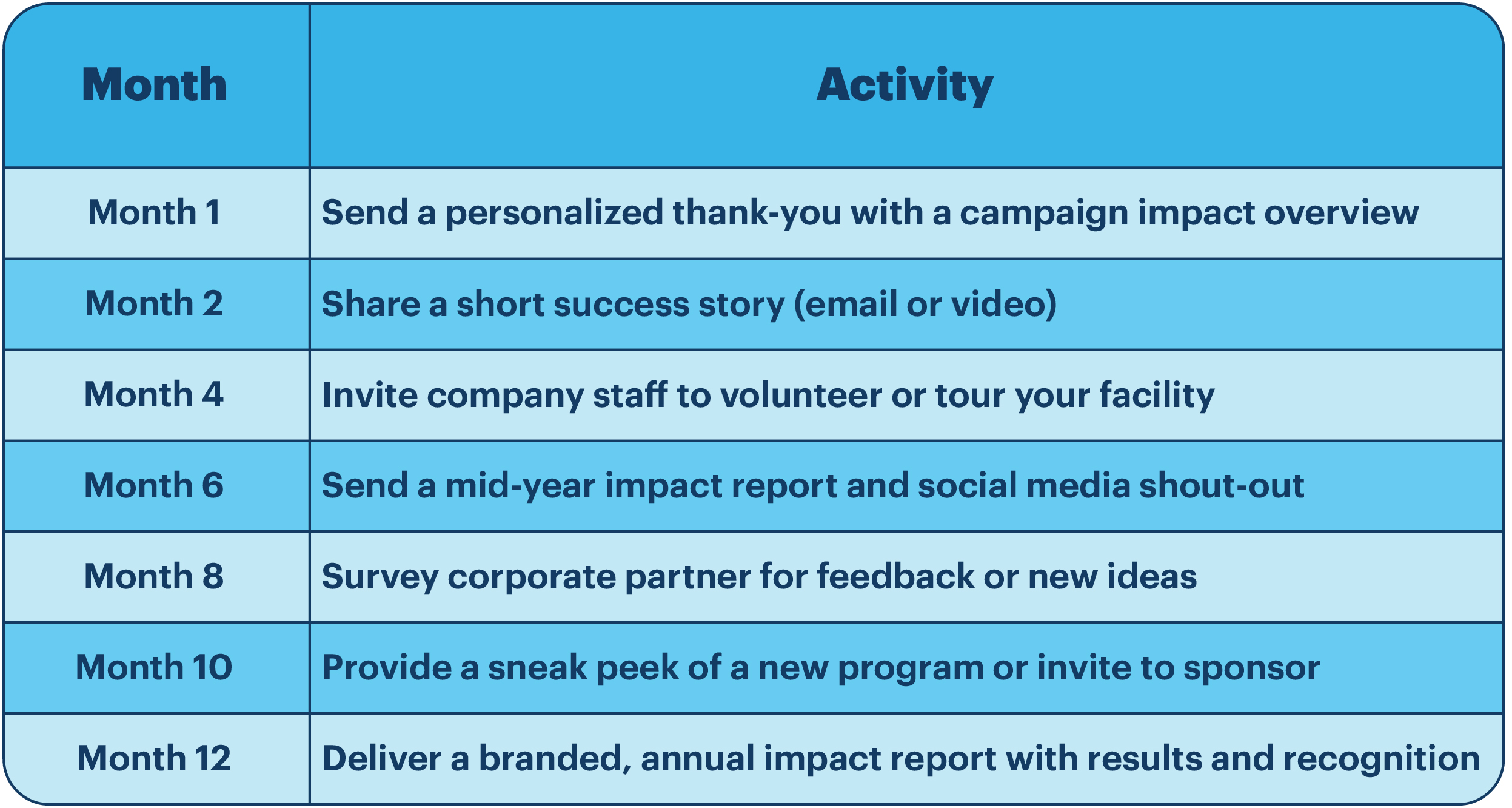
Shout corporate partners out at events, in your newsletter, on social media, and in your annual report depending on their level of support and your recognition levels. Recognition is more than a thank-you—it’s a strategic touchpoint that reinforces their brand and values.
Pro tip: Align your recognition levels with your sponsorship or major donor tiers. Offering consistent naming conventions, visibility opportunities, and perks (like VIP seating or speaking time) helps manage expectations and creates a smoother experience for both partners and staff.
While thanking your sponsors is essential, it’s just as important to do it in a legally sound way. It’s common to provide benefits in exchange for corporate gifts—but it’s important to stay compliant. Offer visibility and incentives while staying within IRS guidelines.
Here’s what’s appropriate:
Invite staff to volunteer or attend events. Engaged employees can become champions for your cause.
Prepare impact reports that show key metrics, photos, testimonials, and progress. Show that their donation, volunteerism, sponsorship, or fundraising efforts made a measurable difference.
Show your impact, effortlessly. Use DonorPerfect’s scheduled report feature to deliver timely updates to your corporate partners—complete with metrics, visuals, and stories that showcase their impact.
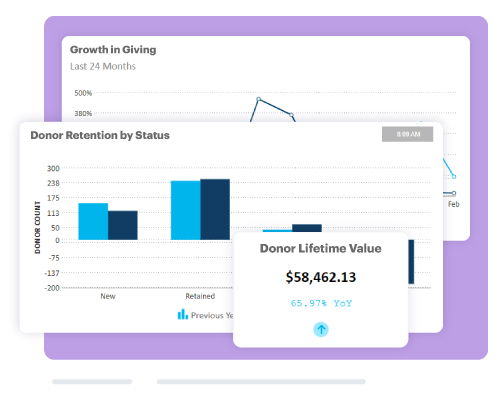
Working with companies can be incredibly rewarding—but it also comes with unique challenges. You may need to navigate slower approval processes, detailed reporting requirements, or differing expectations around event participation or visibility. Consider the staff time, systems, and communication needed to maintain these relationships well.
The right tools can make it easier to track, grow, and manage corporate relationships:
Explore platforms that integrate with your fundraising systems and make it easier for donors—and their companies—to support your cause.
Built-in tools for smarter giving partnerships. DonorPerfect’s integrations streamline matching gifts, volunteer tracking, and CRM management—all in one place. Explore how the right integrations can simplify your corporate giving workflows. Want to sharpen your strategy? Register for the virtual DonorPerfect Conference this June to learn from nonprofit leaders and get hands-on training on forms, automation, and fundraising practices.
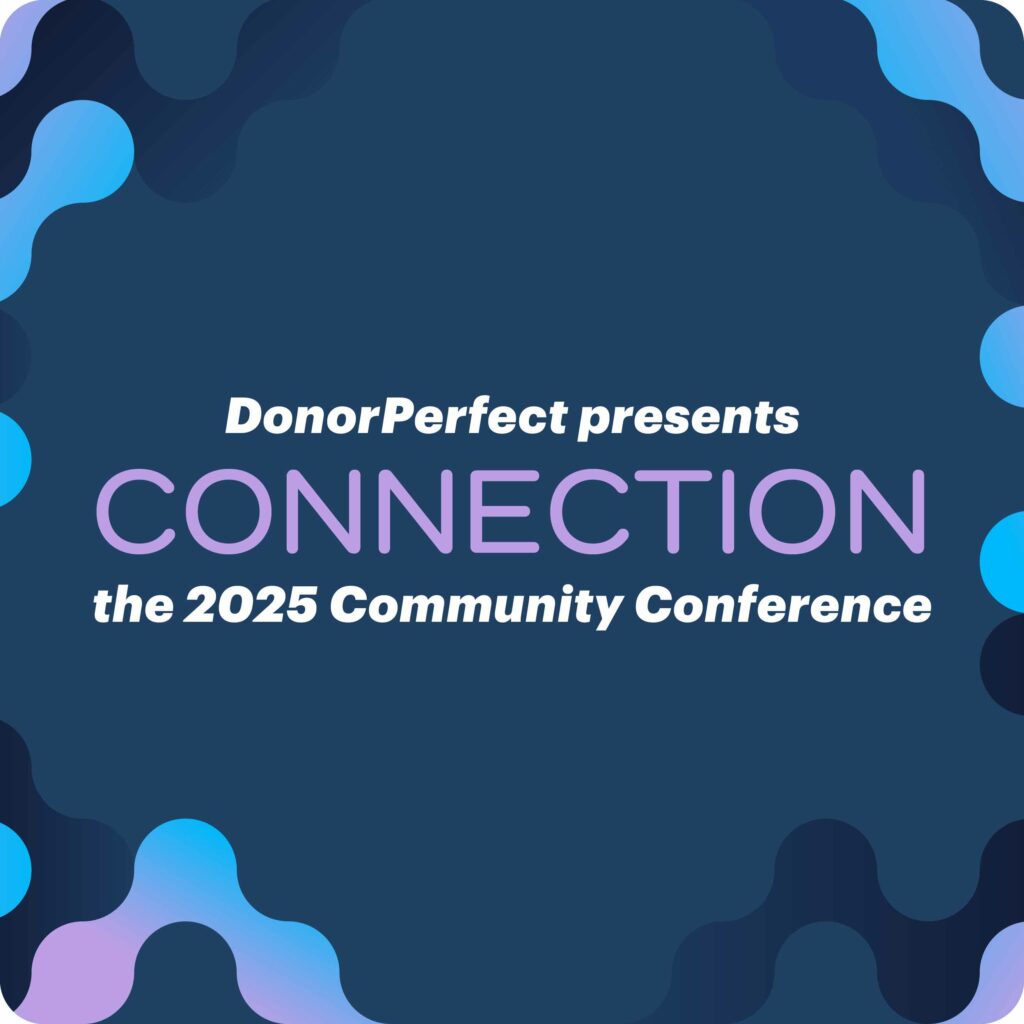
The landscape of corporate philanthropy is changing fast. Here are the top trends shaping the future:
Companies are embedding giving into their long-term strategies—often as part of 3- to 5-year CSR or ESG plans. These plans evolve, which is why it’s essential to stay in regular communication.
When you understand their current priorities and future direction, you can offer timely opportunities that fit naturally into their goals—and yours—keeping your organization top of mind as strategies shift.
Stay aligned with corporate goals. Track goals, monitor trends, and align with corporate CSR strategies using DonorPerfect’s Dashboard Analytics. Stay in sync as strategies evolve—and keep your nonprofit top of mind.

Issues like climate change, DEI, and health equity are front and center. Nonprofits working in these areas will find more alignment as companies increasingly seek partnerships that support their Environmental, Social, and Governance (ESG) goals. Many businesses now publish annual CSR or sustainability reports that outline these priorities. Reviewing them can help your nonprofit craft a compelling, mission-aligned proposal. By positioning your work within these focus areas, you’re more likely to tap into long-term funding opportunities and integrated partnership models.
AI and analytics are revolutionizing corporate philanthropy. Companies are using these tools to identify high-impact nonprofits and customize their giving strategies. Nonprofits that demonstrate strong data practices and personalized engagement will have an advantage in standing out.
DonorPerfect’s free fundraising AI writer is ready to assist your nonprofit with engaging partner communications.
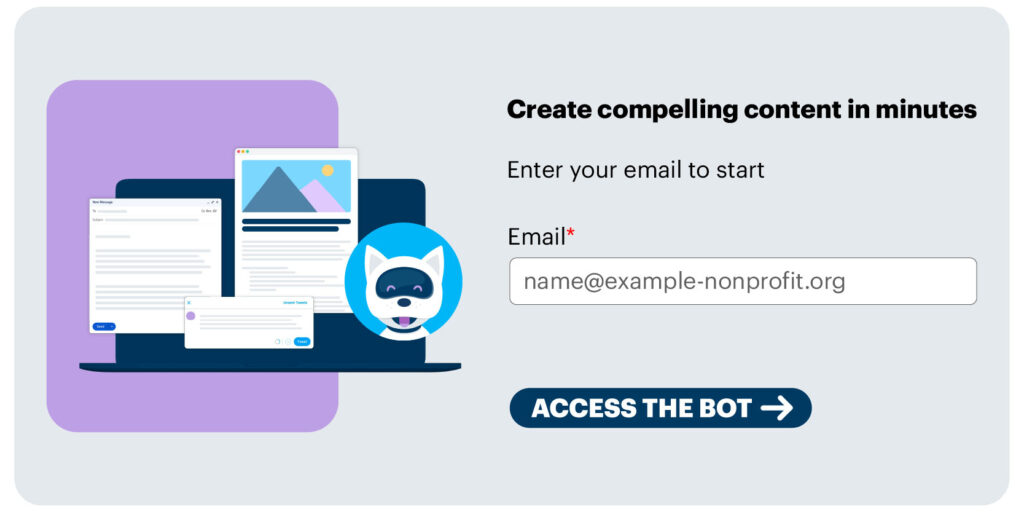
Collective giving is gaining momentum, with companies increasingly involving employees in philanthropic decisions:
Corporate giving is more than a fundraising tactic—it’s a powerful partnership model that can help your nonprofit scale, innovate, and thrive. By understanding the types of corporate donation programs and building meaningful relationships with businesses, you’ll unlock new opportunities and expand your impact.
Now is the time to build a strategy, reach out to aligned partners, and leverage fundraising systems to make corporate giving a core part of your fundraising success.
Ready to grow your corporate giving program? DonorPerfect offers tools that help you track, engage, and grow your relationships with corporate partners. Let us help you turn company donations to charity into long-term revenue for your mission. Sign up for a personalized DonorPerfect demo, today!
1. How can smaller nonprofits compete for corporate donations against larger organizations?
2. What role do employees play in influencing corporate giving decisions?
3. How do companies measure the success of their corporate giving programs?
4. Can a nonprofit approach a company that doesn’t have a formal giving program?
5. Is it appropriate to offer benefits or incentives in exchange for corporate donations?
Follow us on social!